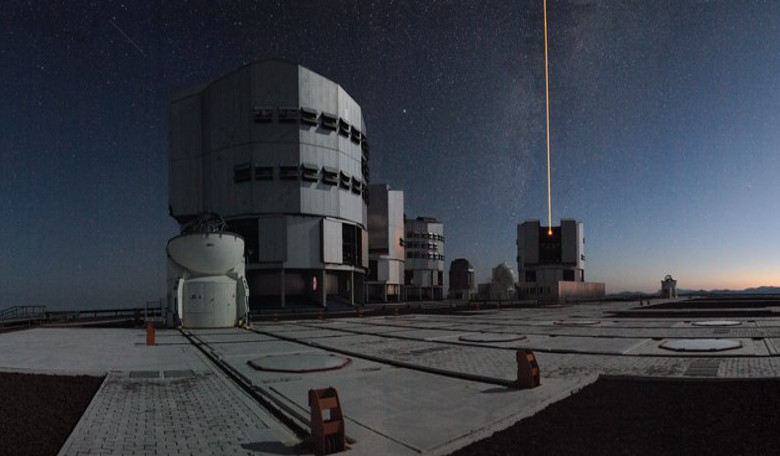ESA and Breakthrough Initiatives have announced an agreement that will see the Very Large Telescope (VLT) instrumentation in Chile being adapted to search for planets in the nearby star system Alpha Centauri.
The Alpha Centauri system hit the headlines last year when scientists detected the closest exoplanet to us – Proxima b – around its third and faintest star, Proxima Centauri. Many have speculated as to the habitability of the planet and wondered if Proxima b has any other companions lurking nearby.
However detecting a planet around a star’s ‘habitable zone’ is incredibly difficult, especially a rocky world such as our own, as not only are they that much smaller than their giant gaseous cousins which are a lot easier to spot, but the brightness of the planetary system’s host star generally overwhelm the relatively dim and tiny planets.
Step forward ESO’s VLT. Under a deal announced by Pete Worden, Chairman of the Breakthrough Prize Foundation and Executive Director of the Breakthrough Initiatives, along with ESO’s Director General Tim de Zeeuw, funds will be made available to modify the VISIR (VLT Imager and Spectrometer for mid-InfraRed) instrument mounted on the the VLT to greatly enhance its ability to find potentially habitable planets around the closest stellar system to Earth.
VISIR, as its name suggests, observes light in the mid-infrared portion of the electromagnetic spectrum. This wavelength range is up to 40 times longer than visible light waves, and it allows scientists to peer through dust clouds to see the beginning stages of a blossoming planetary system. But even viewed in the mid-infrared, an evolving central star still remains millions of times brighter than any fully formed planets orbiting close by, and other means are therefore needed to reduce the blinding stellar light.
To overcome this limitation, the VISIR will be adapted to employ a technique called coronagraphy which reduces the stellar light with the aid of adaptive optics. This should then help to reveal any possible signatures of potential terrestrial-like planets.
The new hardware includes an instrument module contracted to Kampf Telescope Optics (KTO), Munich, who will supply a novel detector calibration device and a wavefront sensor and plans for a new coronagraph to be developed jointly by University of Liège (Belgium) and Uppsala University (Sweden) is also in the pipeline.
Of course searching for a planet is one thing, but sending a spacecraft to look at it up, close and personal is another. This perhaps explains Breakthrough Initiatives motives for the deal, as the company’s research and engineering programme Breakthrough Starshot, launched in April 2016, aims to demonstrate proof of concept for an ultra-fast light-driven “nanocraft” – miniature space probes attached to lightsails – that could reach speeds up to 100 million miles an hour, thus allowing a flyby mission to reach Alpha Centauri in just over 20 years from launch.
Although a number of engineering challenges need to be solved before these missions can become a reality, “along the way, the project could generate important supplementary benefits to astronomy, including solar system exploration and detection of Earth-crossing asteroids,” reports Starshot.











